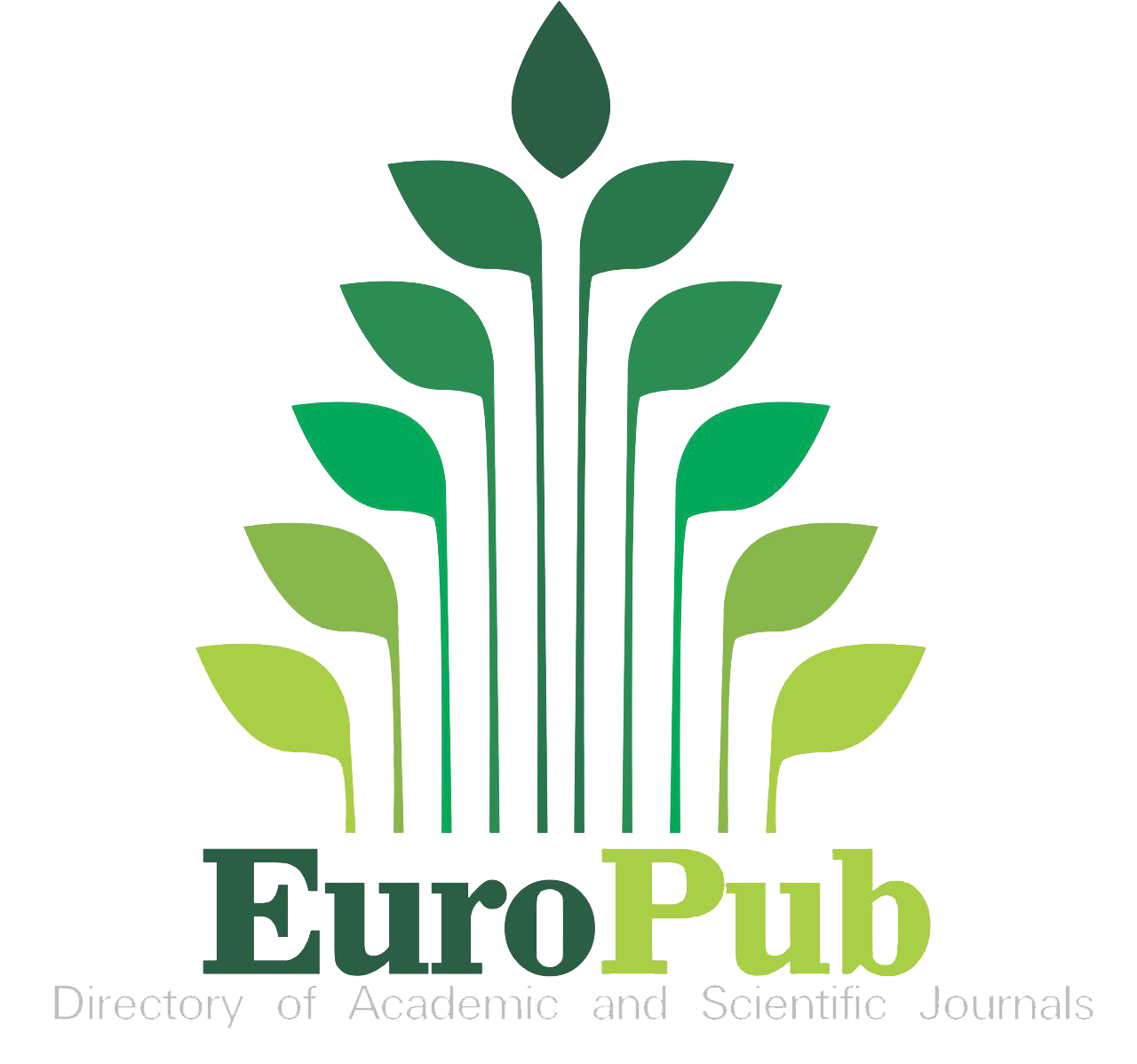Determinants for disclosure of the key audit matters in non-financial companies of B3
DOI:
https://doi.org/10.16930/2237-766220233390Keywords:
Auditor's Report, Key Audit Matters, DeterminantsAbstract
This research analyzes the determinants of the quantity of key audit matters (KAM) reported in audit reports from 2016 to 2019 of the non-financial companies listed on B3. The longitudinal regression model for panel data - Poisson’s Log-Linear was applied to an annual sample of at least 272 companies, resulting in 1,198 reports and 3,295 KAM (dependent variable), considering as explanatory variables the aspects of the auditor, the auditee, and corporate governance mechanisms. The findings demonstrate that being audited by the big four is negatively associated with the quantity of KAM. This may be due to the big four or not reporting the same mean number of KAMs per company. Auditors of larger companies, less profitable and with greater operational risk, disclose more KAM, probably aiming to ensure their independence. The audit committees were not statistically significant, not impacting the quantity of KAM reported. The results contribute to the literature on factors that affect the disclosure of KAM in a non-European context (Bepari et al., 2022) with four years of data, and to companies, auditors, and regulatory and supervisory bodies, through Poisson’s multilevel regression, which is an appropriate approach for structured counting data in clusters of relatively similar observations (panels). This advances the studies by Ferreira and Morais (2020) and Guedes et al. (2021), who used ordinary least squares (OLS), and Colares et al. (2020), who used the Chi-square test in one- or two-year analyses of characteristics that tend to establish the quantity of KAM in Brazil.
References
Abbott, L. J., Parker, S., Peters, G. F., & Raghunandan, K. (2003). The association between audit committee characteristics and audit fees. Auditing: A Journal of Practice & Theory, 22(2), 17-32. https://doi.org/10.2308/aud.2003.22.2.17 DOI: https://doi.org/10.2308/aud.2003.22.2.17
Abdullatif, M., & Al-Rahahleh, A. S. (2020). Applying a new audit regulation: reporting key audit matters in Jordan. International Journal of Auditing, 24, 268-291. https://doi.org/10.1111/ijau.12192 DOI: https://doi.org/10.1111/ijau.12192
Abu, A., & Jaffar, R. (2020). Audit committee effectiveness and key audit matters. Asian Journal of Accounting and Governance, 14, 1-12. http://dx.doi.org/10.17576/AJAG-2020-14-06 DOI: https://doi.org/10.17576/AJAG-2020-14-06
Bates, D., Maechler, M., Bolker, B., & Walker, S. (2015). Fitting Linear Mixed-Effects Models Using lme4. Journal of Statistical Software, 67(1), 1-48. doi:10.18637/jss.v067.i01 DOI: https://doi.org/10.18637/jss.v067.i01
Bepari, M. K., Mollik, A. T., Nahar, S., & Islam, M. N. (2022). Determinants of Accounts Level and Entity Level Key Audit Matters: Further Evidence. Accounting in Europe. doi: 10.1080/17449480.2022.2060753 DOI: https://doi.org/10.1080/17449480.2022.2060753
Alves Júnior, E. D., & Galdi, F. C. (2020). Relevância informacional dos principais assuntos de auditoria. Revista Contabilidade & Finanças, 31(82), 67-83. https://doi.org/10.1590/1808-057x201908910 DOI: https://doi.org/10.1590/1808-057x201908910
Brasel, K., Doxey, M. M., Grenier, J. H., & Reffett, A. (2016). Risk disclosure preceding negative outcomes: The effects of reporting critical audit matters on judgments of auditor liability. The Accounting Review, 91(5), 1345-1362. DOI: https://doi.org/10.2308/accr-51380
Camargo, N. S., Rodrigues, F. F., Machado, C. A., & Guerra, M. (2019). Principais assuntos de auditoria e os resultados das empresas listadas na IBRX 100. Revista Contemporânea de Contabilidade, 16(41), 162-180. https://doi.org/10.5007/2175-8069.2019v16n41p162 DOI: https://doi.org/10.5007/2175-8069.2019v16n41p162
Colares, A. C. V., Cruz Alves, K., & Miranda , L. T. F. (2020). Relação entre as características do comitê de auditoria e da auditoria independente das companhias abertas da B3. Revista Ambiente Contábil, 12(1), 152-170. https://doi.org/10.21680/2176-9036.2020v12n1ID18325 DOI: https://doi.org/10.21680/2176-9036.2020v12n1ID18325
Conselho Federal de Contabilidade [CFC]. (2016). Norma Brasileira de Contabilidade – NBC TA 701 - Comunicação dos Principais Assuntos de Auditoria no Relatório do Auditor Independente, de 17 de junho de 2016. http://www1.cfc.org.br/sisweb/SRE/docs/NBCTA701.pdf
Cordos, G., & Fülöp, M. (2015). Understanding audit reporting changes: introduction of Key Audit Matters. Accounting & Management Information System, 14(1), 128-152.
Cruz, A. F. A., Nardi, P. C. C., Figueira, L. M., & Silva, R. L. M. da. (2019). A relação entre o novo relatório do auditor independente e o perfil das empresas auditadas e de auditoria. Revista Contemporânea de Contabilidade, 16(40), 3-23. https://doi.org/10.5007/2175-8069.2019v16n40p3 DOI: https://doi.org/10.5007/2175-8069.2019v16n40p3
DeAngelo, L. E. (1981). Auditor size and audit quality. Journal of Accounting and Economics, 3(3), 183-199. DOI: https://doi.org/10.1016/0165-4101(81)90002-1
Deumes, R., Schelleman, C., Bauwhede, H., & Vanstraelen. (2012). Audit Firm Governance: Do Transparency Reports Reveal Audit Quality? Auditing: A Journal of Practice & Theory, 31(4), 193-214. DOI: https://doi.org/10.2308/ajpt-10301
Elmarzouky, M., Hussainey, K., Abdelfattah, T., & Karim, A. E. (2022). Corporate risk disclosure and key audit matters: the egocentric theory. International Journal of Accounting & Information Management, 30(2), 230-251. https://doi.org/10.1108/IJAIM-10-2021-0213 DOI: https://doi.org/10.1108/IJAIM-10-2021-0213
Ferreira, C., & Morais, A. I. (2020). Análise da relação entre as características das empresas e os principais assuntos de auditoria divulgados. Revista Contabilidade & Finanças, 31(83), 262-274. https://dx.doi.org/10.1590/1808-057x201909040 DOI: https://doi.org/10.1590/1808-057x201909040
Gallizo, J., & Saladrigues, R. (2016). An analysis of determinants of going concern audit opinion: Evidence from Spain stock exchange. Intangible Capital, 12(1), 1-16. http://dx.doi.org/10.3926/ic.683 DOI: https://doi.org/10.3926/ic.683
Gimbar, C., Hansen, B., & Ozlanski, M. E. (2015). Early evidence on the effects of critical audit matters on auditor liability. Current Issues in Auditing, 10(1), A24-A33. DOI: https://doi.org/10.2308/ciia-51369
Guedes, F. Y. A., Araujo, L. C. O., De Luca, M., M. M., & Corrêa, D. M. M. C. (2021). Mecanismos de Governança Corporativa e os Principais Assuntos de Auditoria Reportados pelas Empresas Listadas na B3. Revista de Gestão, Finanças e Contabilidade, 11(3), 04-22. doi: 10.18028/rgfc.v11i3.12195
Gold, A., & Heilmann, M. (2019). The consequences of disclosing key audit matters (KAMs): A review of the academic literature. Maandblad voor Accountancy en Bedrijfseconomie, 93(1/2), 5-14. https://doi.org/10.5117/mab.93.29496 DOI: https://doi.org/10.5117/mab.93.29496
Hox, J. J., Moerbeek, M., & Shoot, R. (2017). Multilevel Analysis: Techniques and Applications (3a ed.). New York: Taylor & Francis. DOI: https://doi.org/10.4324/9781315650982
International Auditing and Assurance Standards Board [IAASB]. (2015). International Standard on Auditing (ISA) 701 (NEW), Communicating Key Audit Matters in the Independent Auditor’s Report. https://www.ifac.org/system/files/publications/files/ISA-701_2.pdf
Jensen, M., & Meckling, W. (1976). Theory of the firm. Journal of Financial Economics, 3, 305-360. DOI: https://doi.org/10.1016/0304-405X(76)90026-X
Kang, Y. J. (2019). Are Audit Committees more challenging given a specific investor base? Does the answer change in the presence of prospective critical audit matter disclosures? Accounting, Organizations and Society, 77. https://doi.org/10.1016/j.aos.2019.04.001 DOI: https://doi.org/10.1016/j.aos.2019.04.001
Köhler, A., Ratzinger-Sakel, N., & Theis, J. (2020). the effects of key audit matters on the auditor’s report’s communicative value: experimental evidence from investment professionals and non-professional investors. Accounting in Europe, 1-24. DOI: https://doi.org/10.1080/17449480.2020.1726420
Lawrence, A., Minutti-Meza, M., & Ping, Z. (2011). Can Big 4 versus Non-Big 4 Differences in Audit-Quality Proxies Be Attributed to Client Characteristics? Accounting Review, 86 (1), 259-286. DOI: https://doi.org/10.2308/accr.00000009
Lennox, C. S., Schmidt, J. J., & Thompson, A. (2019). Is the Expanded Model of Audit Reporting Informative to Investors? Evidence from the UK. SSRN, 1-44.
Litjens, R., Buuren, J., & Vergoossen, R. (2015). Addressing Information Needs to Reduce the Audit Expectation Gap: Evidence from Dutch Bankers, Audited Companies and Auditors. International Journal of Auditing, 19(3), 267-281. DOI: https://doi.org/10.1111/ijau.12042
Mah’d, O. A., & Mardini, G. H. (2022). Matters may matter: The disclosure of key audit matters in the Middle East. Cogent Economics & Finance, 10(1), 1-20. https://doi.org/10.1080/23322039.2022.2111787 DOI: https://doi.org/10.1080/23322039.2022.2111787
Moscariello, N., Pizzo, M., Ricciardi, G., & Vinciguerra, R. (2019). Key audit matters: a preliminary survey on relations with the corporate governance. An analysis in the Italian institutional setting. In S. Esposito De Falco, F. Alvino, & A. Kostyuk (Eds.), New challenges in corporate governance: Theory and practice (pp. 30-33). https://doi.org/10.22495/ncpr_6 DOI: https://doi.org/10.22495/ncpr_6
Pinto, I., & Morais, A. I. (2019). What matters in disclosures of key audit matters: Evidence from Europe. Journal of International Financial Management and Accounting, 30, 145-162. https://doi.org/10.1111/jifm.12095 DOI: https://doi.org/10.1111/jifm.12095
R Core Team. (2022). R: A language and environment for statistical computing. R Foundation for Statistical Computing, Vienna, Austria. https://www.R-project.org/.
Reid, L. C., Carcello, J. V., Li, C., Neal, T. L., & Francis, J. R. (2019). Impact of auditor report changes on financial reporting quality and audit costs: Evidence from the United Kingdom. Contemporary Accounting Research, 36(3), 1501-1539. DOI: https://doi.org/10.1111/1911-3846.12486
Sierra-García, L., Gambetta, N., & García-Benau, M. A., & Orta-Pérez, M. (2019). Understanding the determinants of the magnitude of entity-level risk and account-level risk key audit matters: the case of the United Kingdom. The British Accounting Review, 51(3), 227-240. DOI: https://doi.org/10.1016/j.bar.2019.02.004
Velte, P. (2018). Does gender diversity in the audit committee influence key audit matters readability in the audit report? UK evidence. Corporate Social Responsibility and Environmental Management, 25(5), 748-755. DOI: https://doi.org/10.1002/csr.1491
Velte, P. (2020). Associations between the financial and industry expertise of audit committee members and key audit matters within related audit reports. Journal of Applied Accounting Research, 21(1), 185-200. https://doi.org/10.1108/JAAR-10-2018-0163 DOI: https://doi.org/10.1108/JAAR-10-2018-0163
Wuttichindanon, S., & Issarawornrawanich, P. (2020). Determining factors of key audit matter disclosure in Thailand. Pacific Accounting Review, 32(4), 563-584. https://doi.org/10.1108/PAR-01-2020-0004 DOI: https://doi.org/10.1108/PAR-01-2020-0004
Zhang, P. F., & Shailer, G. (2022). The impact of audit committee expertise on external auditors' disclosures of key audit matters. International Journal of Auditing, 26(2), 151-170. https://doi.org/10.1111/ijau.12256 DOI: https://doi.org/10.1111/ijau.12256
Published
How to Cite
Issue
Section
License
Copyright (c) 2023 Revista Catarinense da Ciência Contábil

This work is licensed under a Creative Commons Attribution 4.0 International License.
The copyright for articles published in this journal belongs to the author (s), with first publication rights assigned to Revista Catarinense da Ciência Contábil. Due to appearing in this publicly accessible journal, articles are free to use, with mandatory recognition of the original authorship and initial publication in this magazine and for educational and non-commercial applications. The magazine chose to use published works for non-commercial purposes, including the right to submit or work for publicly accessible databases. The content of published articles is the sole and exclusive responsibility of the authors. - The author (s) authorize (s) a publication of the article in the journal; - The author (s) guarantee (s) that a contribution is original and unpublished and that it is not being evaluated in another magazine (s); - A magazine is not responsible for the opinions, ideas and concepts emitted in the texts, for the full responsibility of the author (s); - It is reserved to the editors or the right to make textual adjustments and to adjust the article to the publication rules.
This work is licensed under a Creative Commons Atribuição-NãoComercial-CompartilhaIgual 4.0 Internacional.










